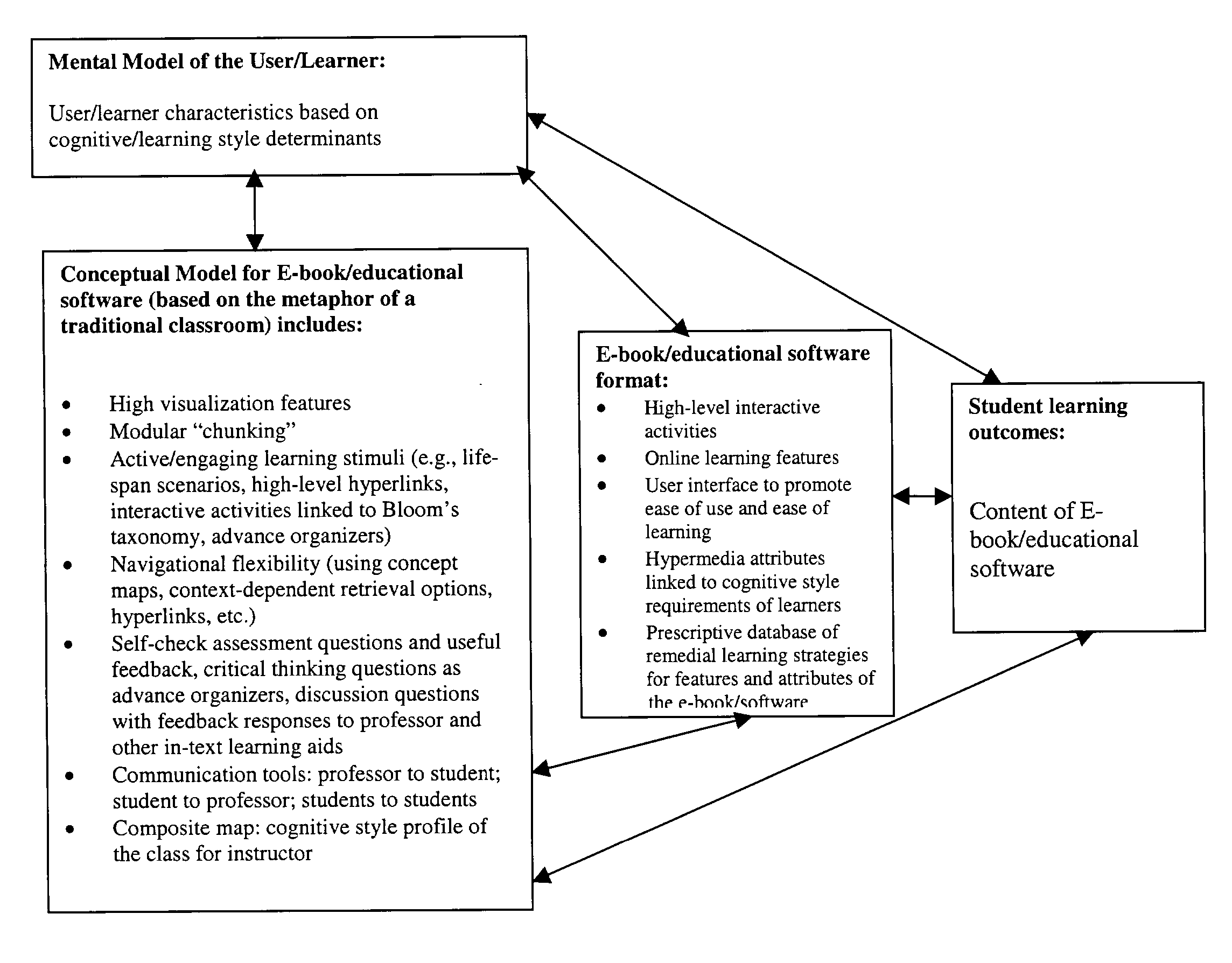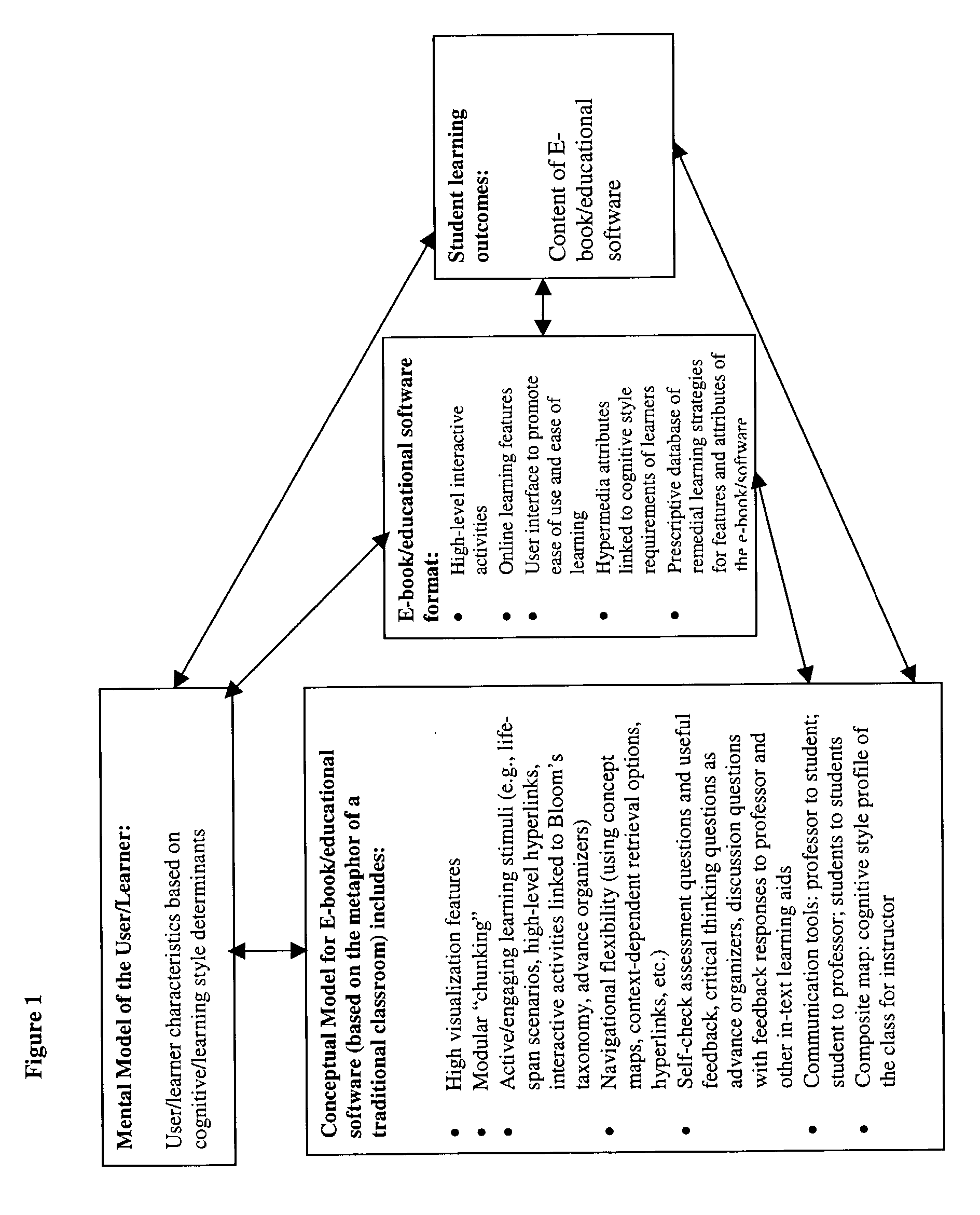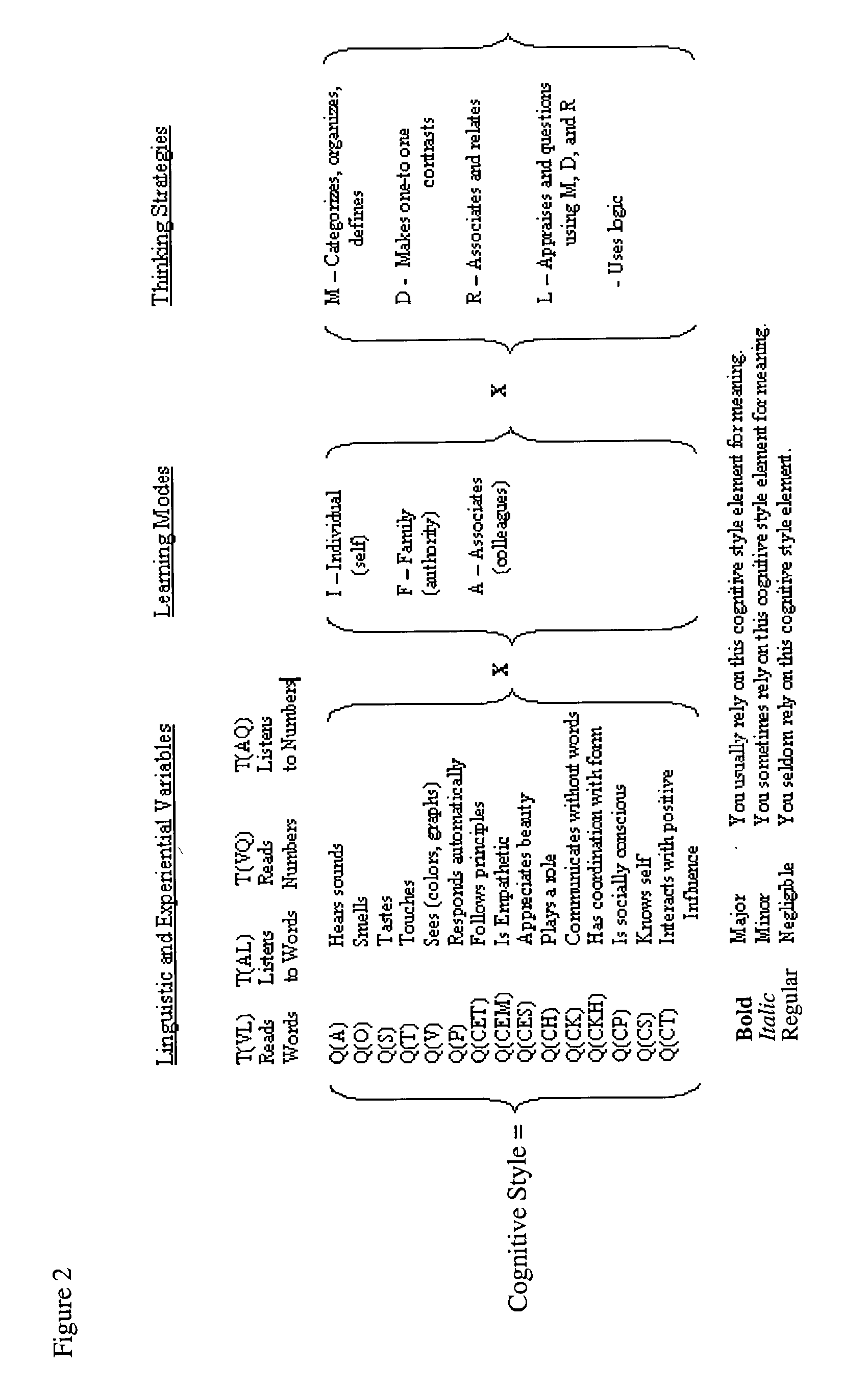Conceptual framework and assessment tool for designing a personalized electronic textbook and other online educational software
a technology for designing and teaching software, applied in the field of electronic publishing, can solve the problems of difficult maintenance of highly complex hypertext or vacuous hypermedia with little thought to improving student learning and ease of use, and prior attempts at e-publishing have produced highly complex hypertext that is difficult to maintain with little thought to improving learning
- Summary
- Abstract
- Description
- Claims
- Application Information
AI Technical Summary
Problems solved by technology
Method used
Image
Examples
Embodiment Construction
[0089] A typical application is a media selection based on the comparison between the content of the media presented and the learning style profile of a particular user. The process proposed here is supplantation. Supplantation is an explicit alteration of an instructional task such that it accommodates or supplants for a learner the information-processing requirements of the task that the learner is unable to perform on his or her own.
[0090] An E-book design feature such as linear text (i.e., strings of words on the screen) would be difficult for a learner to process who prefers a spatial-oriented approach to learning the content material. Concept maps are visual outlines, or graphical representations of textual concepts. Concept maps can be used as advanced learning aids for learners who prefer to see pictures rather than read words. An example of a concept map for a module on middle age is shown in FIG. 4.
[0091] Concept or spatial maps are preferably developed for each learning m...
PUM
 Login to View More
Login to View More Abstract
Description
Claims
Application Information
 Login to View More
Login to View More - R&D
- Intellectual Property
- Life Sciences
- Materials
- Tech Scout
- Unparalleled Data Quality
- Higher Quality Content
- 60% Fewer Hallucinations
Browse by: Latest US Patents, China's latest patents, Technical Efficacy Thesaurus, Application Domain, Technology Topic, Popular Technical Reports.
© 2025 PatSnap. All rights reserved.Legal|Privacy policy|Modern Slavery Act Transparency Statement|Sitemap|About US| Contact US: help@patsnap.com



